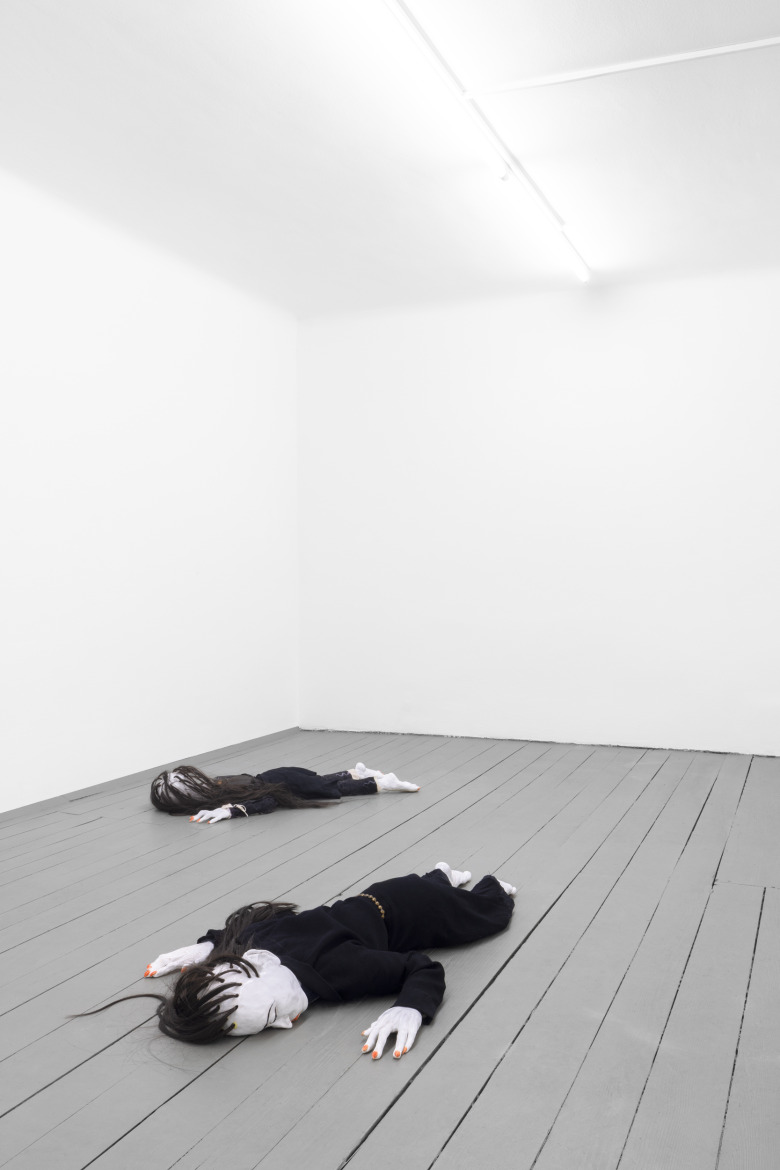
Nschotschi Haslinger, Symptom Couverture, Installation view, EXILE Vienna, 2024
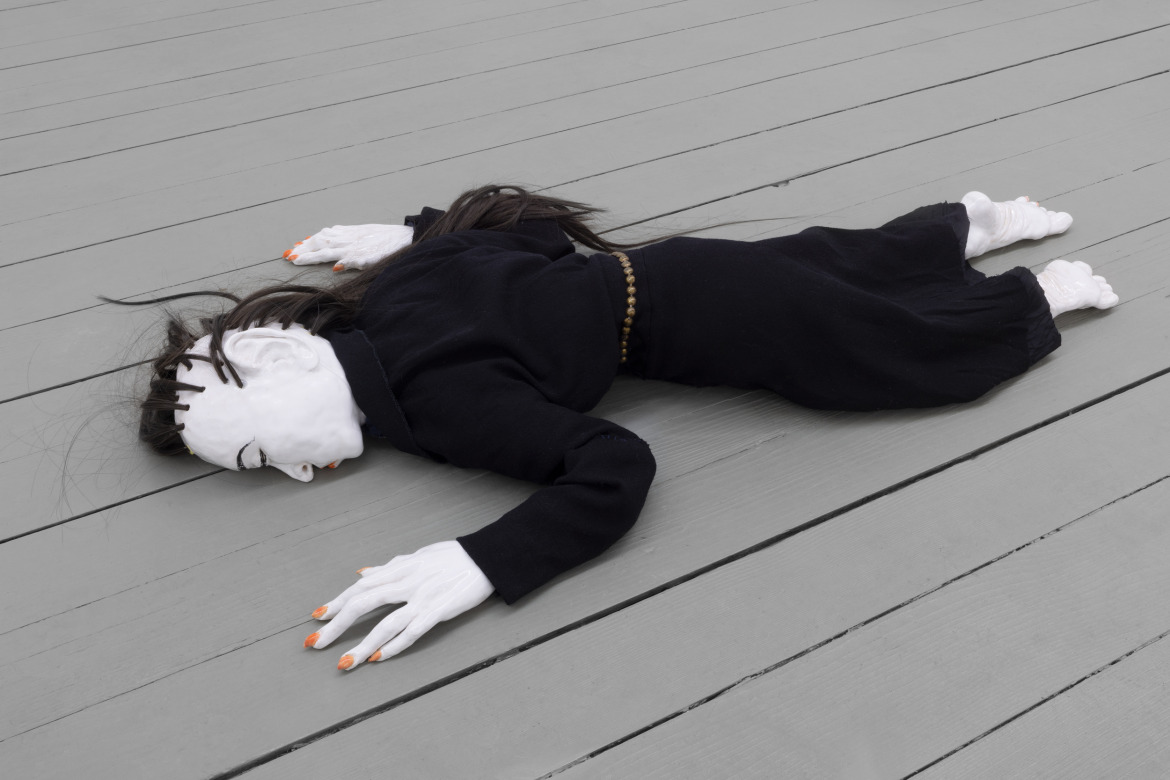
Nschotschi Haslinger, Regenerationspuppe II, 2023, various materials, 17 x 53 x 100 cm

Nschotschi Haslinger, Regenerationspuppe III, 2023, various materials, 11 x 47 x 90 cm
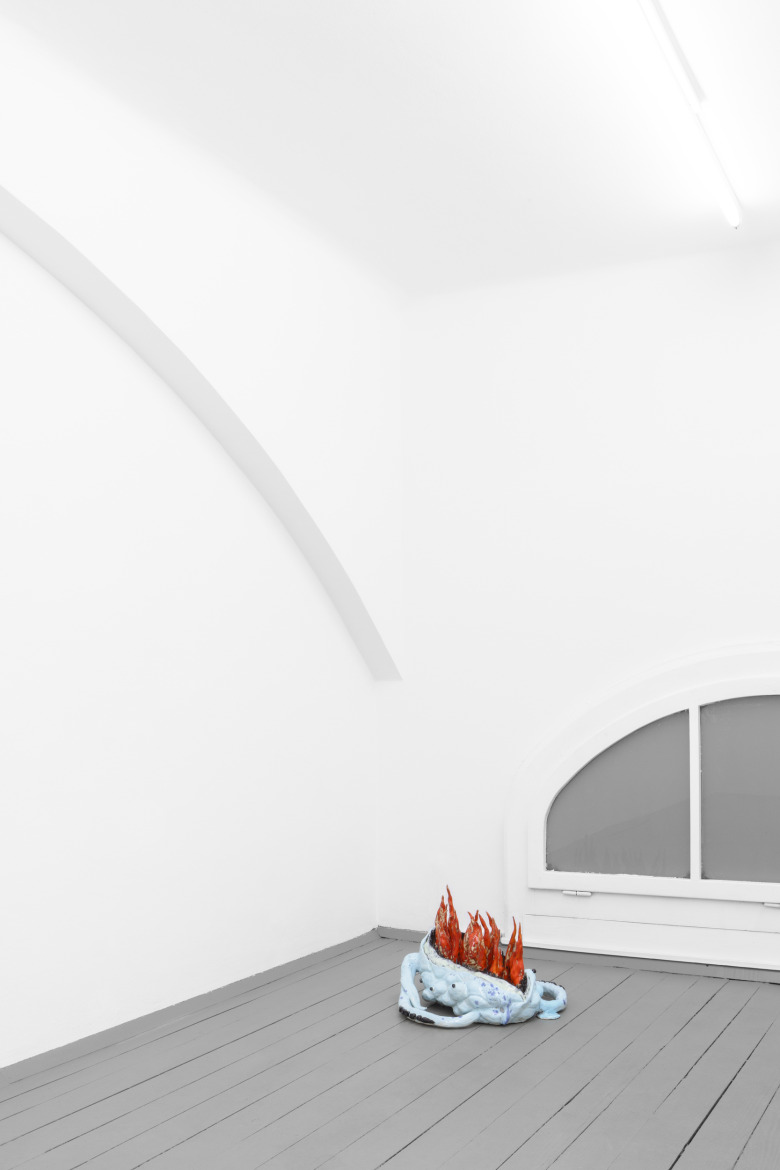
Nschotschi Haslinger, Symptom Couverture, Installation view, EXILE Vienna, 2024
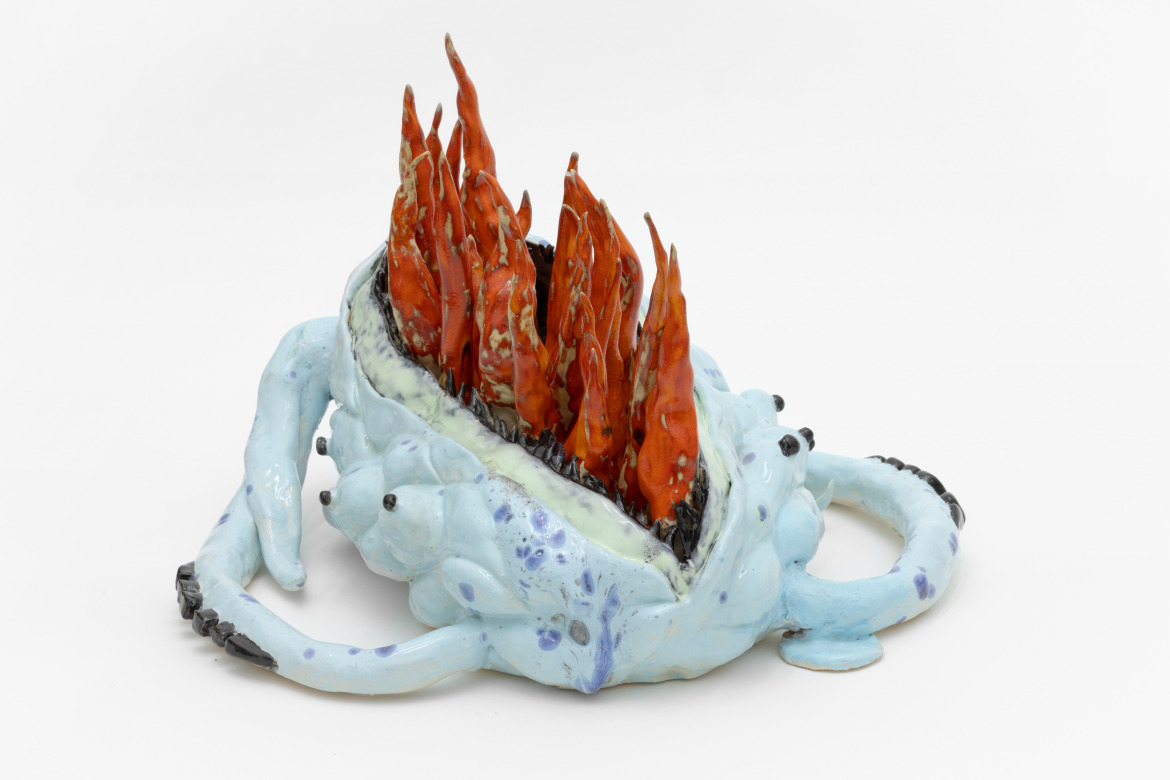
Nschotschi Haslinger, Tasche VI, 2023, glazed ceramics, 30 x 45 x 41 cm

Nschotschi Haslinger, Symptom Couverture, Installation view, EXILE Vienna, 2024
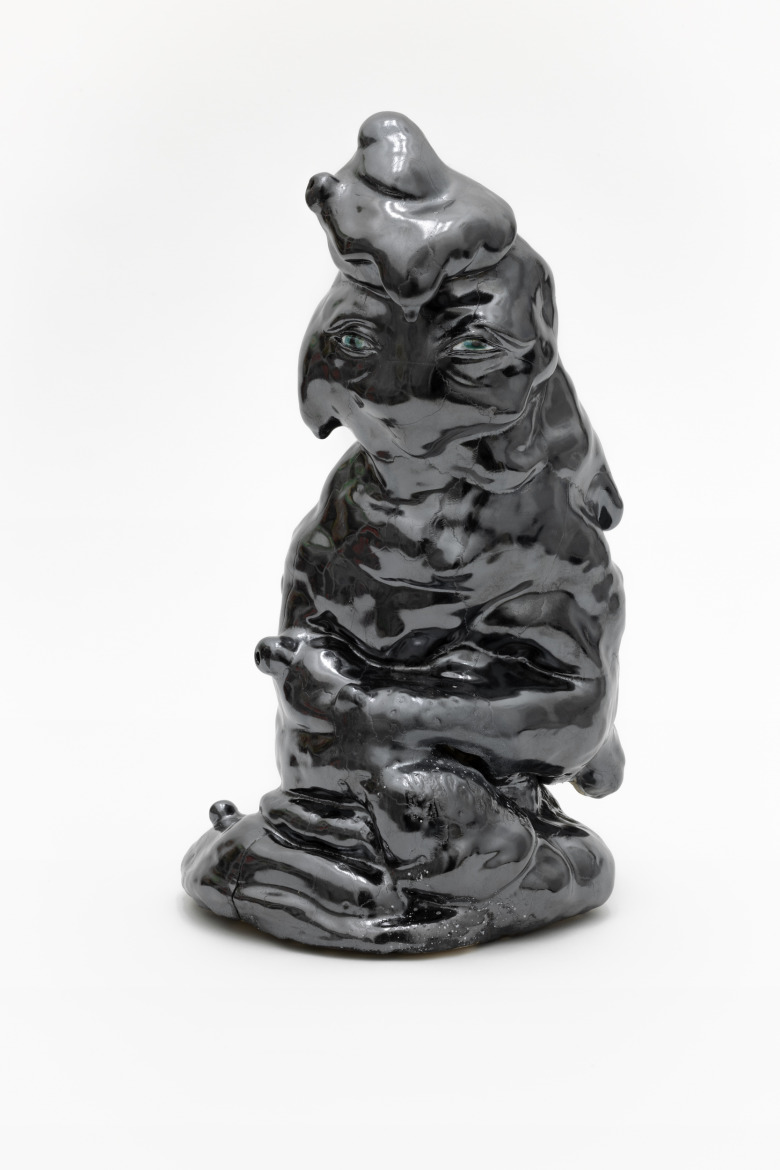
Nschotschi Haslinger, Wächter I, 2023, glazed ceramics, 42 x 24 x 21 cm

Nschotschi Haslinger, Wächter II, 2023, glazed ceramics, 38 x 34 x 30 cm
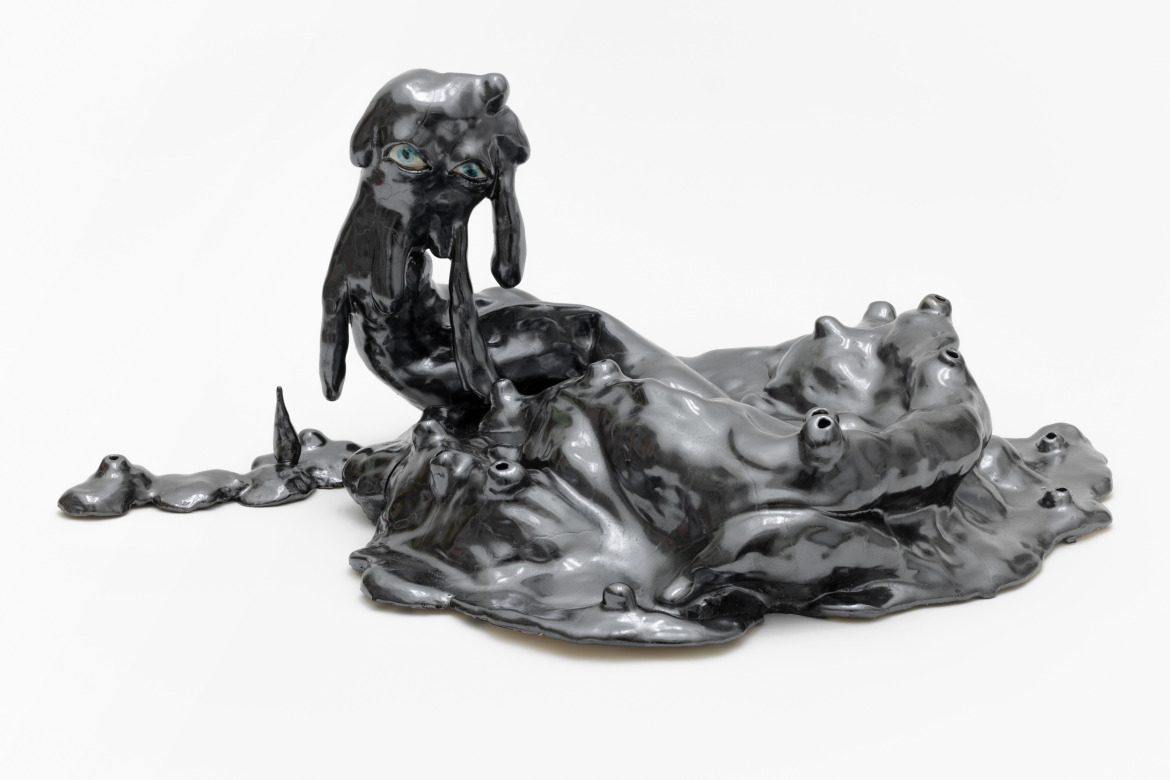
Nschotschi Haslinger, Wächter III, 2023, glazed ceramics, 23 x 34 x 33 cm
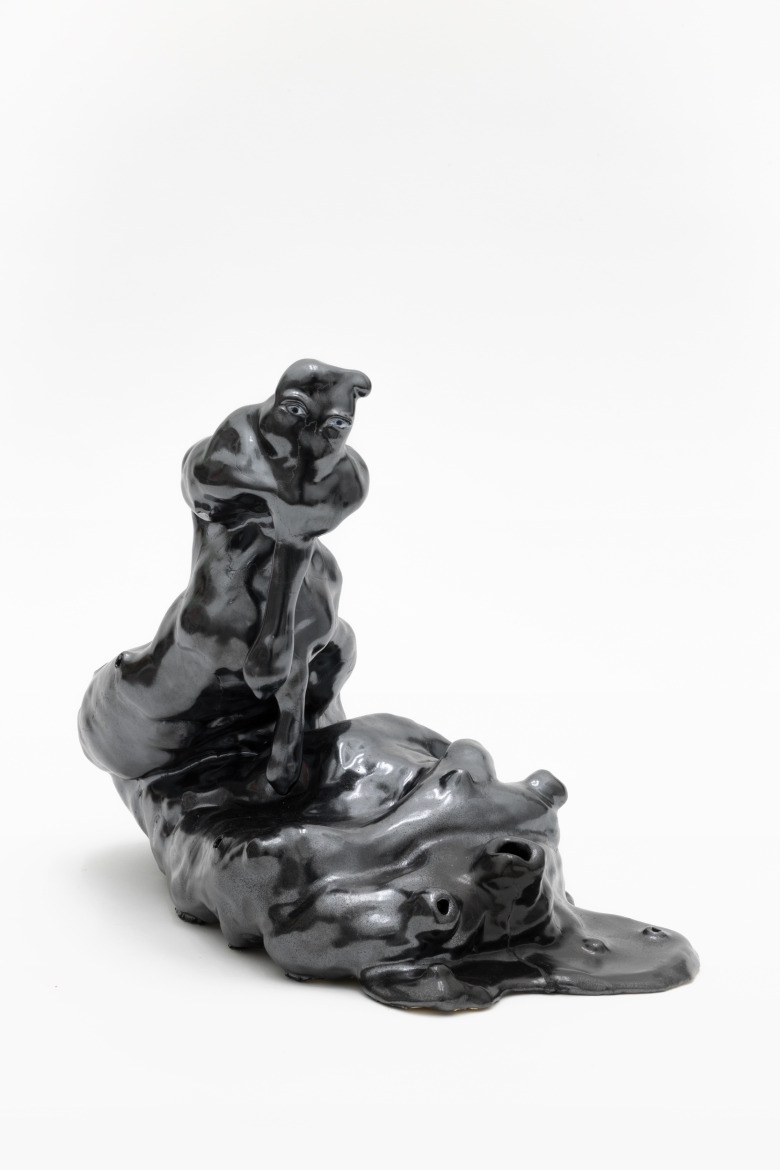
Nschotschi Haslinger, Wächter VI, 2023, glazed ceramics and varnish, 31 x 25 x 35 cm

Nschotschi Haslinger, Wächter IV, 2023, glazed ceramics and varnish, 32 x 23 x 33 cm
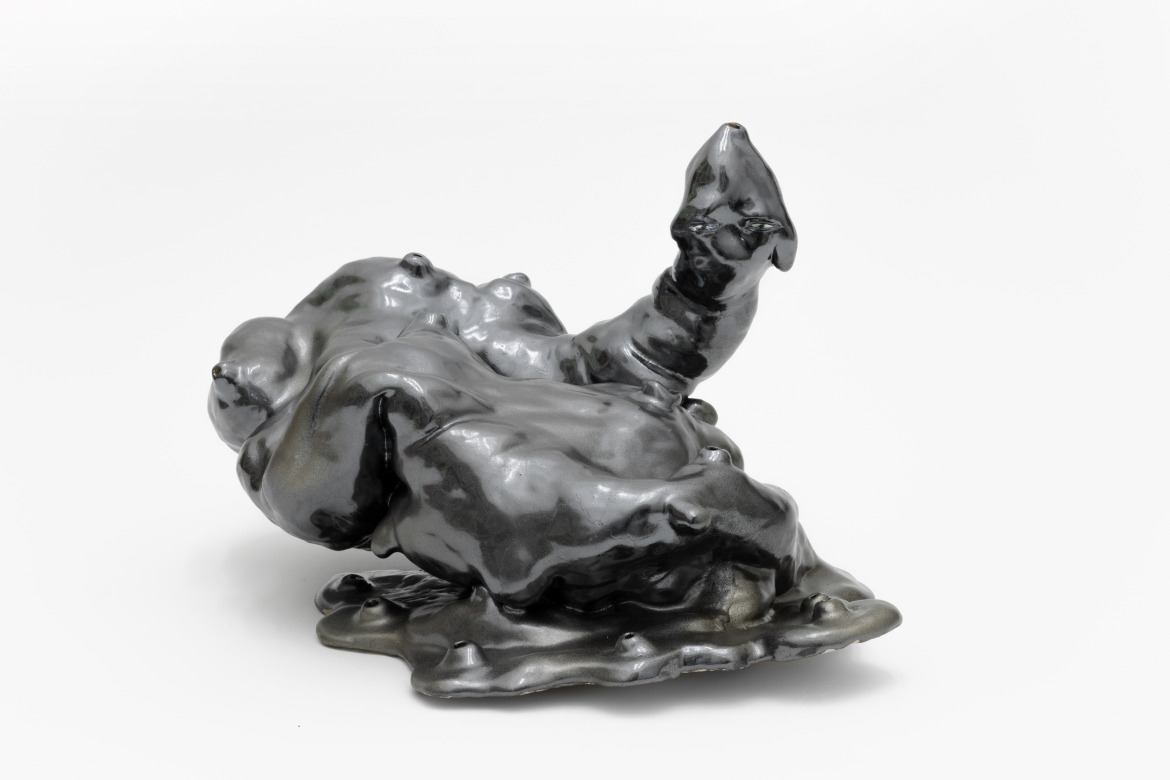
Nschotschi Haslinger, Wächter V, 2023, glazed ceramics and varnish, 24 x 26 x 39 cm
EXILE is happy to announce our first exhibition for 2024. Entitled Symptom Couverture, it is the second solo exhibition by Nschotschi Haslinger at the Vienna gallery and will be accompanied by a text from Kaya Haslinger:
Symptom Couverture – an intrusive, deceptively tasty appearance that indicates a hidden disorder. Forced to react, Nschotschi Haslinger’s works show different ways of dealing with symptoms of overload, somewhere between healing and repression.
Modernism’s dream of progress is over; it has left behind destroyed landscapes and inescapably precarious living conditions -though production continues mercilessly. The illusion of satisfaction through consumption offers a retreat from the madness of reality. For a brief moment, the products seem to fulfil the unfulfillable desire for perfection, until they themselves rot in the ruins of capitalism. Haslinger’s motive of the burning handbag becomes a symbol of this desire, but its organic, fleshy shape suggests that it is more than just an inanimate object.
The overwhelming abundance of stimuli cuts off every connection. Haslinger’s Puppen, lying with their faces to the ground, appear to have been slain by this flood. They regenerate by taking root and drawing new strength from the earth – an essential step to be able to participate in the outside world again. Contrary to the idea of progress and constant self-renewal, Haslinger’s Puppen are adapted to – and by – existing circumstances: they are made up of old scraps such as children’s clothing, synthetic hair and ceramics.
With their dark, shimmering, bubble-beating figure, Haslinger’s Wächter resemble an intelligent physical mass from the depths of space that is mentioned in numerous sci-fi films such as Prometheus or Venom. It represents terror and a loss of political autonomy, but it also represents the archaic fear of one’s own shadow that the oily substance produces when surrounding us. Some conspiracy theories warn against it for this reason, others see it as a cure for the darkness of human nature. But the Wächter, with their harmless, tired eyes, do not seem really threatening.
Coming from psychology, the figure of the inner guardian, moves in an area of tension between ‘bringing to light’ and ‘hiding’. It splits the original, authentic self into different personality strands and adapts them according to the respective demands of the environment. In this way, the inner guardian protects against pain, but also blocks access to it.
These objects are also reminiscent of liquid slag, a by-product of industrial metal extraction, which can be seen as a symptom of resource exploitation and industrialization. In the end, maybe it’s not about extraterrestrial takeover, but about the liberation and healing of the earth itself. From the ruins we leave behind, it forms the foundations of new spaces of existence in which there is no room for our way of life.
Sources:
Lowenhaupt Tsing, Anna, The Mushroom at the End of the World, USA, 2015
Curtis, Adam, The Century of the Self, UK, 2002
→Ramona Heinlein, The sleeping ceramic dolls of Nschotschi Haslinger, Frieze, Feb 2024 (PDF, 1.5 MB)























